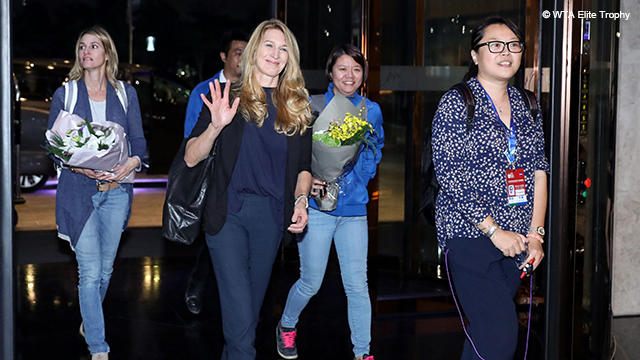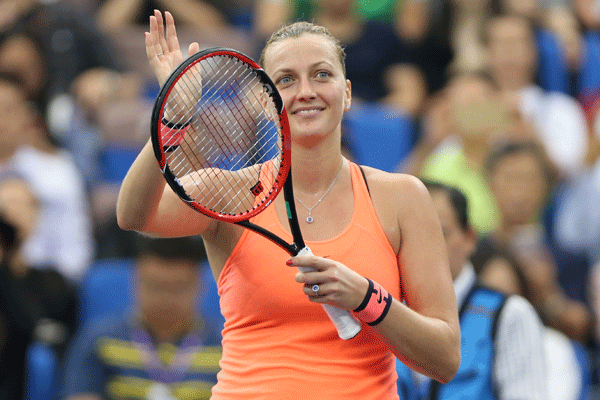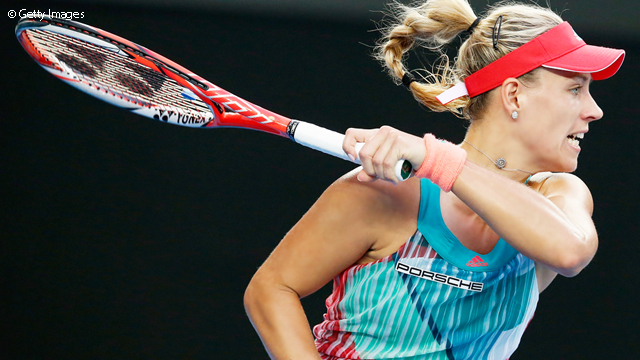WTA Elite Trophy Ambassador Steffi Graf Lands In Zhuhai

Steffi Graf has landed in Zhuhai, China for the second edition of the Huajin Securities WTA Elite Trophy Zhuhai.

The former No.1 has fans all around the world, and in Zhuhai it’s no different!

She received a warm greeting from her fan club, which received her with posters, artwork and more!

The tennis legend stopped for a photo with the group.

Graf headed to the Hong Kong-Zhuhai-Macao Bridge for a different kind of tennis match.

Joined by Caroline Garcia, Graf took part in a fun match on the bridge which connects Hong Kong, Macao and mainland China.

The bridge is one of the city’s most impressive landmarks.

Graf showed off her 22-time Grand Slam winning skills on the bridge against Garcia.

After the match they grabbed a photo with some special guests: Mezle Chung, Vice General Manger of Zhuhai Huafa Group Co.,Ltd., Micky Lawler, President of WTA and dozens of the bridge’s workers.

When it’s completed, the bridge will be the longest sea-spanning bridge in the world, the worker explained to Graf.

After the bridge visit, she headed back to the Zhuhai Hengquin International Tennis Center, where the WTA Elite Trophy is contested, for another fun activity.

The former No.1 hosted a charity clinic outside of the Haufa Center Court.

Graf ran through the basics with 29 students from primary schools and high schools, including 19 from Macau.

She had words of wisdom for even the smallest tennis fans!

After the clinic, Graf had time for all her fans, signing autograph after autograph.





